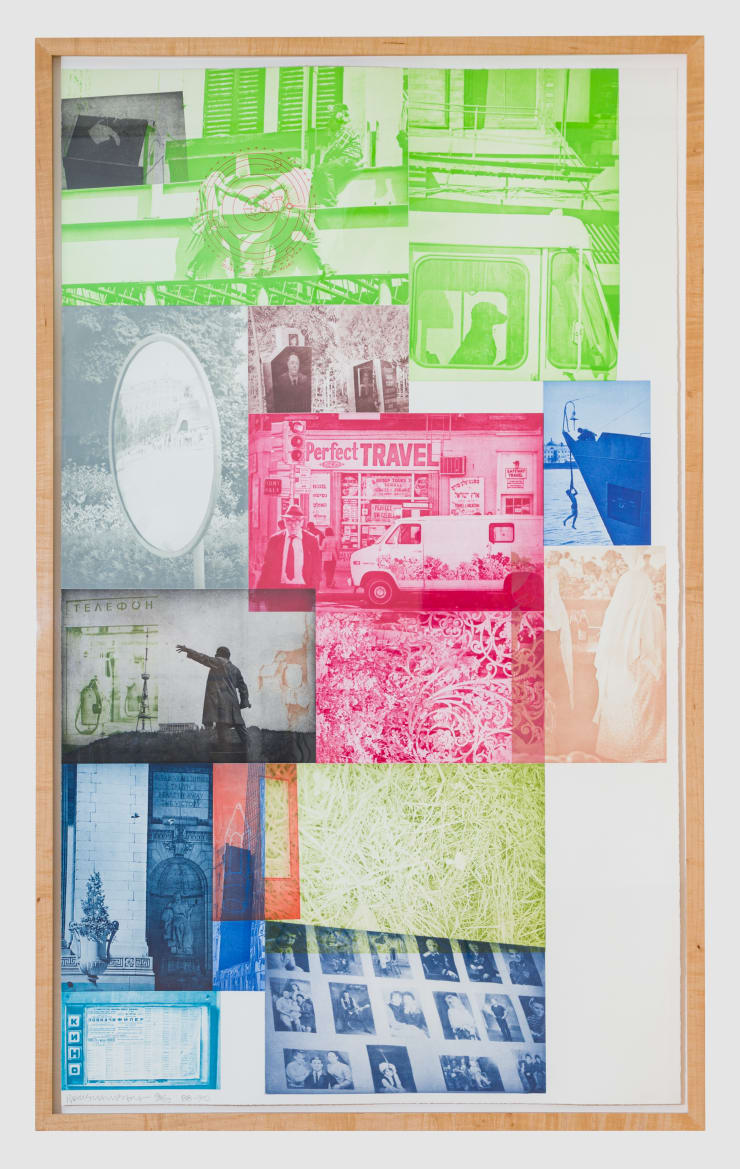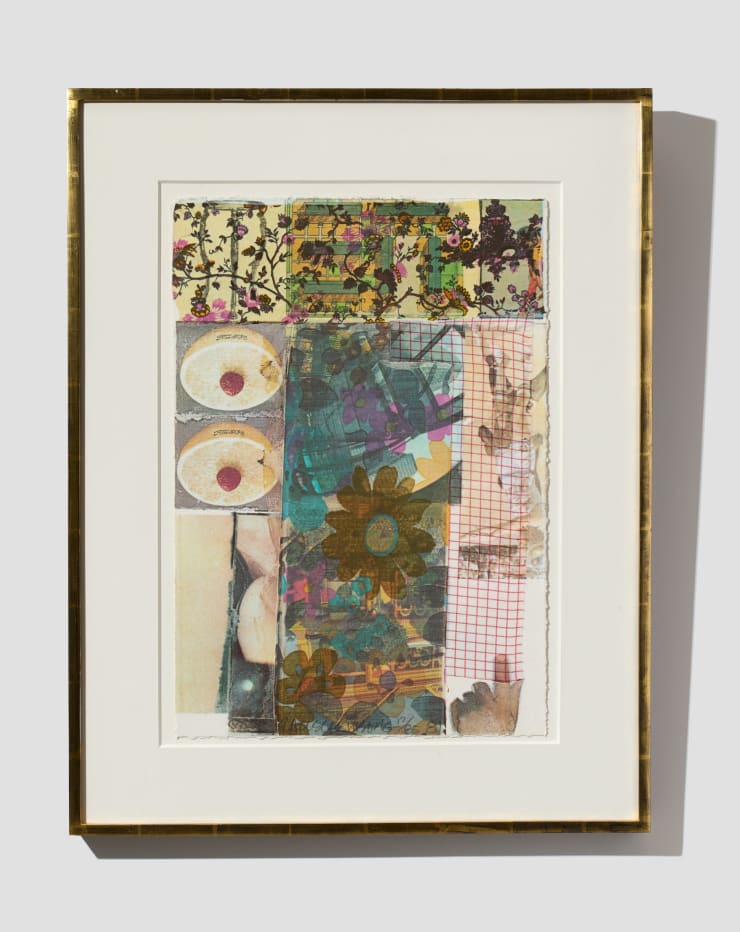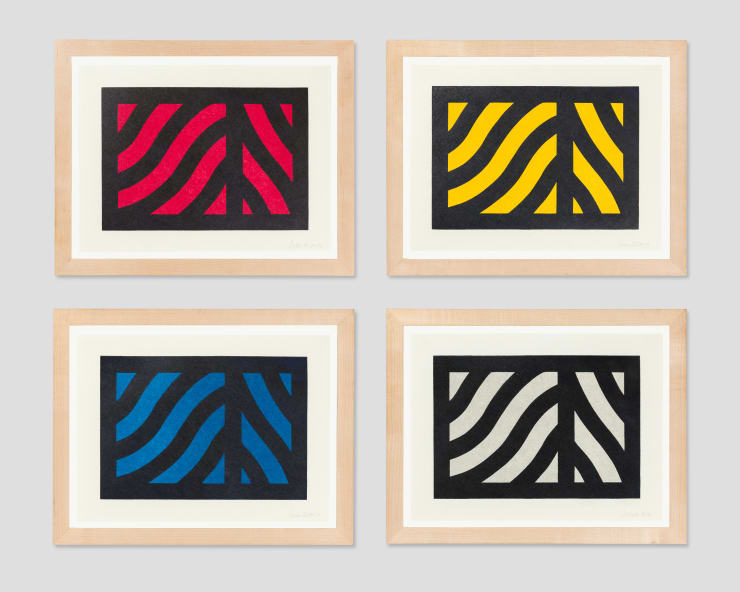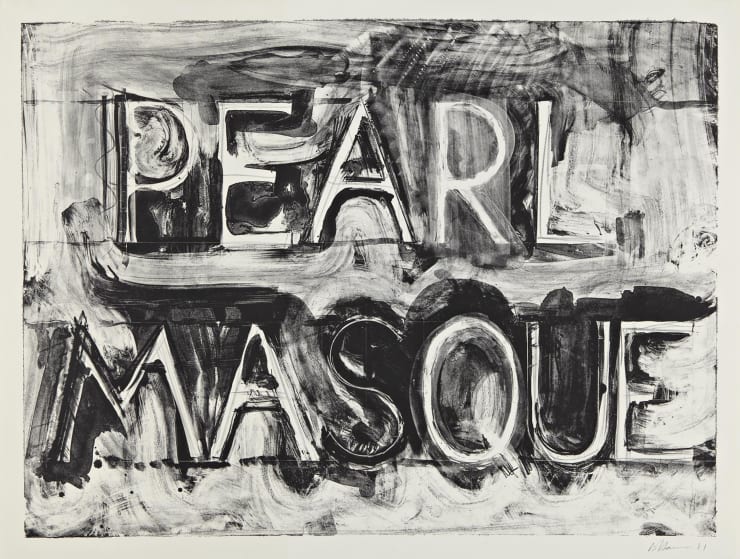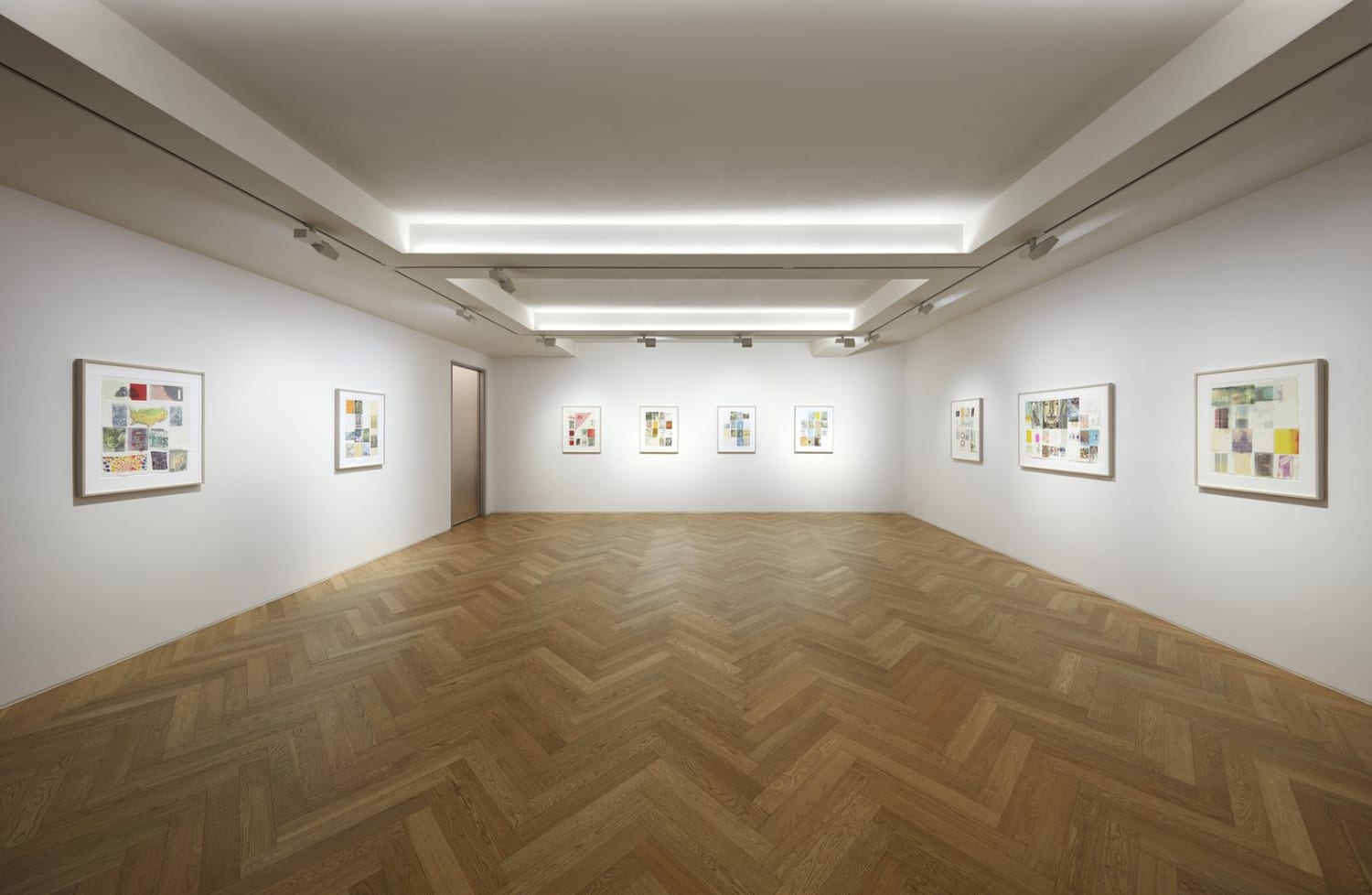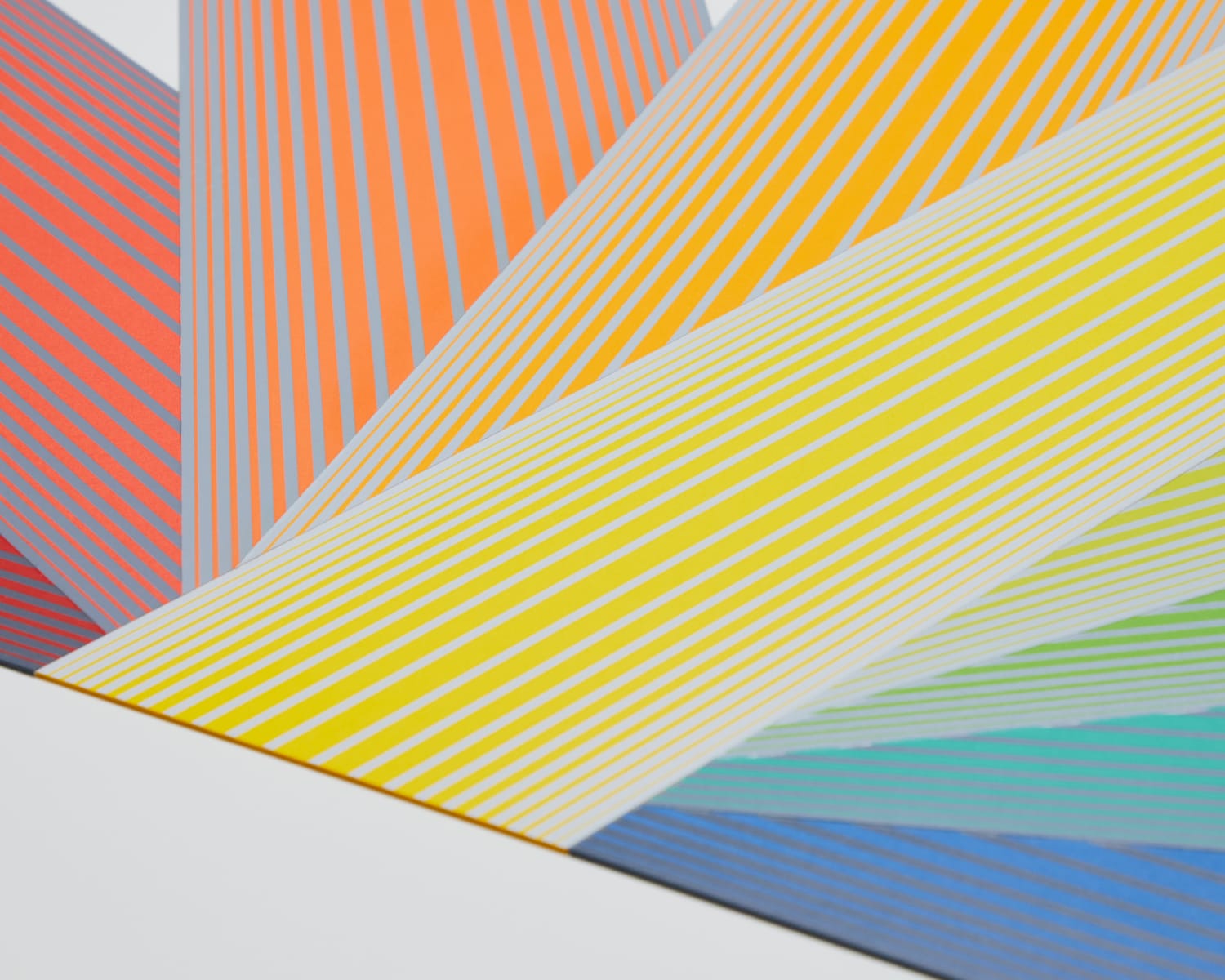Robert Rauschenberg
Robert Rauschenberg (1925-2008, Texas) is known for his revolutionary and collaborative art practice that spanned over six decades. The artist prefigured the Pop Art movement, often employing iconic imagery from pop culture and images from publications to comment on American life. These innovations, in combination with his references to the gestural painting style of Abstract Expressionism, challenged the aesthetic conventions of his time. Rauschenberg also transformed everyday objects like quilts, umbrellas, pillows and garbage into painted works mounted in sculptural compositions on the wall, a series of works titled Combines. This practice expanded the boundaries of the traditional canvas and created work at the intersection of art and life.
Rauschenberg studied at the experimental art institution Black Mountain College, where he was taught by Bauhaus artist and instructor Joseph Albers. There, he met other creative contemporaries including composer John Cage and choreographer Merce Cunningham, who were his frequent collaborators thereafter. They fearlessly blended the realms of music, dance, sculpture and performance. His work and partnerships carved the path of the Neo-Dada movement of the 1950s and 1960s, alongside artists such as Jasper Johns and Allan Krapow. Throughout the length of his career, Rauschenberg experimented with a number of mediums including painting, sculpture, prints, photography and set design, never adhering to a singular method or form and consistently blurring the boundary between art and the everyday. Today, Rauschenberg’s compositions are found in countless premiere institutions, including the Whitney Museum of American Art (New York), Tate Modern (London), National Museum of Art (Japan) and Louisiana Museum of Modern Art (Denmark).
Related Works
- Rauschenberg's work was a major inspiration for conceptual artist Ed Ruscha early his career. Ruscha wrote, "The work of [Jasper] Johns and Rauschenberg marked a departure in the sense that their work was premeditated, and Abstract Expressionism was not … So I began to move towards things that had more of a premeditation." View his work.
- Rauschenberg is often associated with Pop Art, but his artistic philosophy is arguably more aligned with Neo-Dada, which sought to narrow the gap between art and everday life. Jim Dine is another Neo-Dada practitioner who gets grouped with Pop. View his work.
-

Chromo
Annual Winter/Spring Print Show 31 Jan - 4 Jul 2020El Anatsui, Mel Bochner, Helen Frankenthaler, Sam Gilliam, Sol LeWitt, Mark Mulroney, Bruce Nauman, Louise Nevelson, Mimmo Paladino, Hayal Pozanti, Robert Rauschenberg, Bridget Riley, Ed Ruscha, Jonas Wood at Zane Bennett Contemporary ArtRead more -

Writing on the Wall
27 Sep - 16 Nov 2019Zane Bennett Gallery gathers the text-based work of eight American masters of art on paper: Donald Baechler, Mel Bochner, David X Levine, Robert Motherwell, Bruce Nauman, David Rathman, Robert Rauschenberg...Read more -

Master Prints of the '70s - '90s
27 Feb - 20 Mar 2015ZBCA will unveil for the first time our latest acquisitions, including works by Robert Rauschenberg, Roy Lichtenstein, Helen Frankenthaler, Jim Dine, Rufino Tamayo, Bernar Venet, and Robert Motherwell among others.Read more

